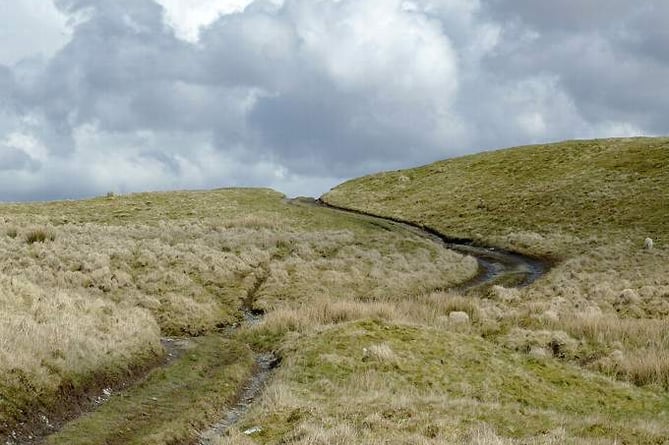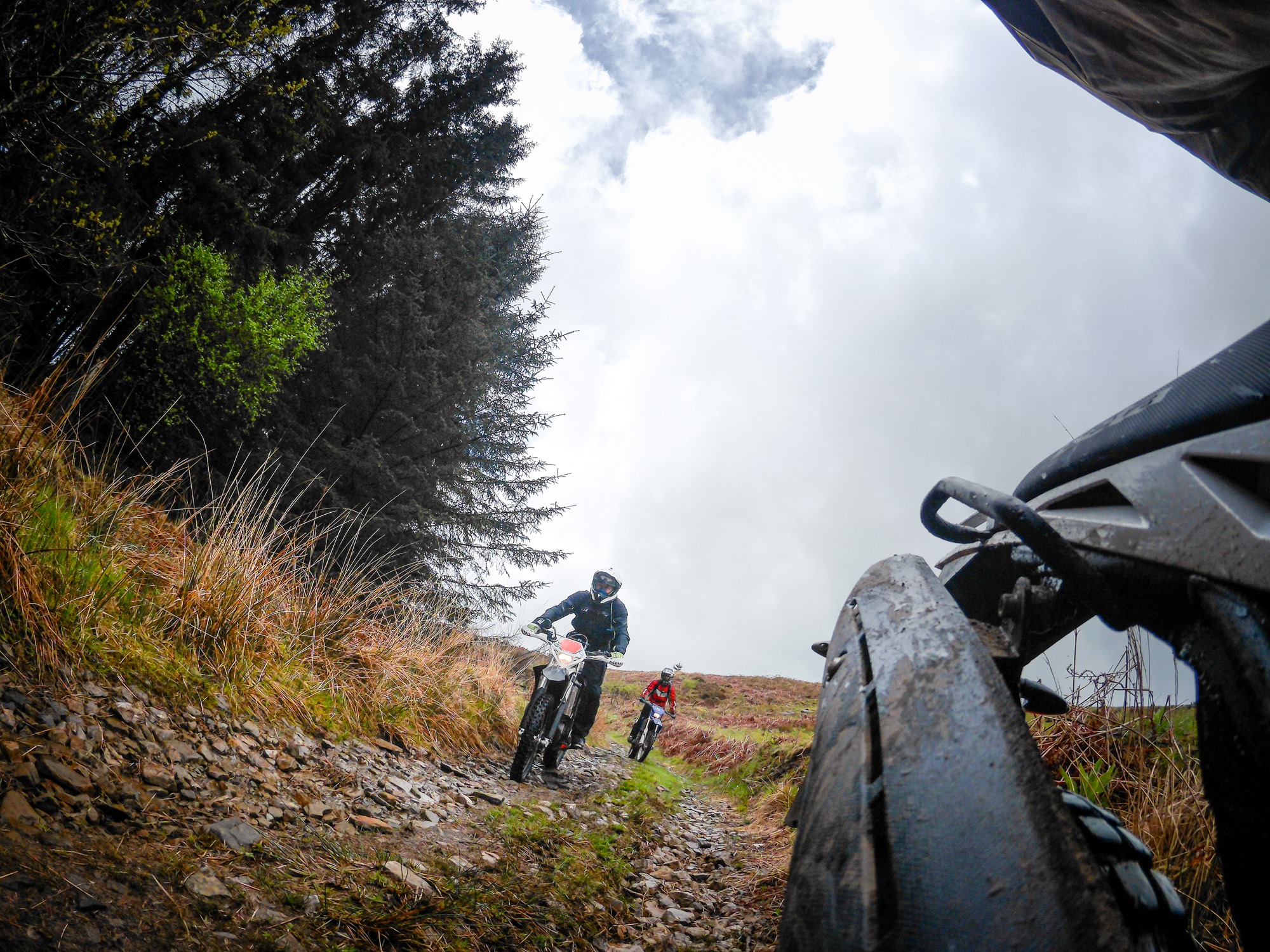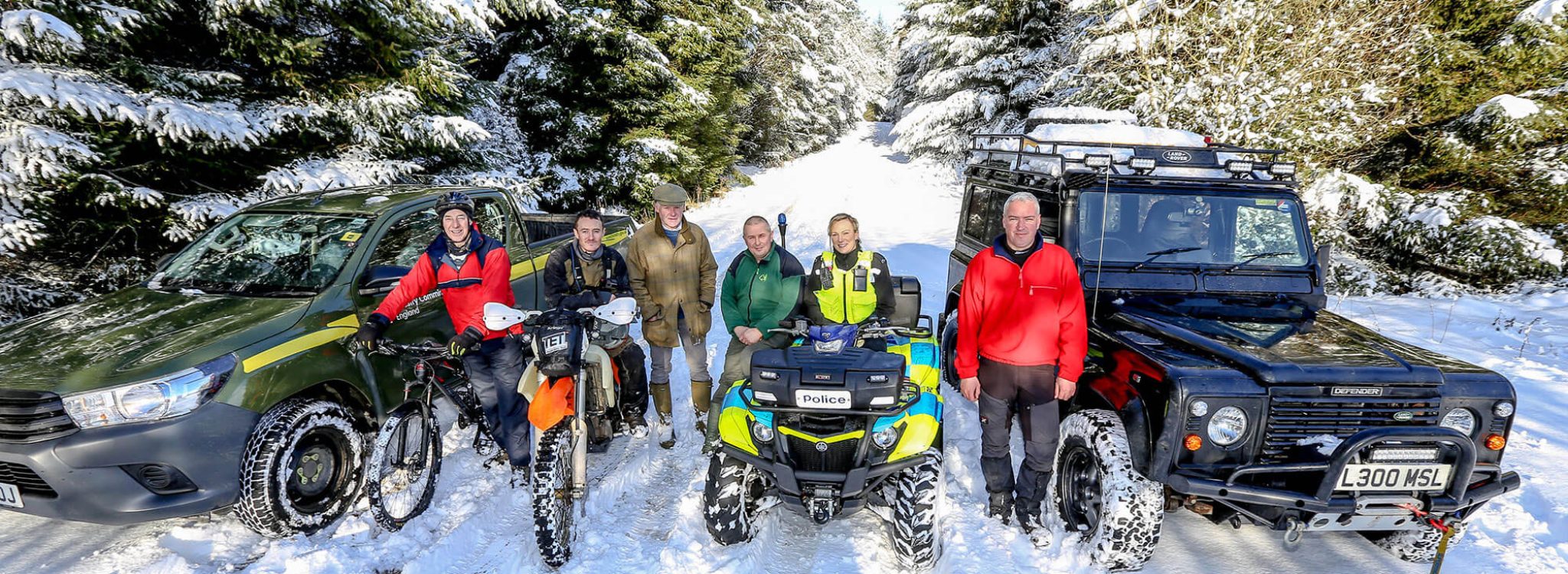
Improving RoW signage in a forest
Northumbria TRF completed a successful, multi-organisation signage project in Slaley Forest in early 2018. Then Chairman, Greg Villalobos explained his group’s involvement.
Slaley Forest is about halfway between Newcastle and Hexham in the north east of England. It’s Forestry Commission managed area that is popular with all user groups. For trail riders, it’s an enjoyable venue due to its network of BOATs that take in some spectacular scenery, it’s almost like riding in Scandinavia at times. The tracks are wide and well maintained and able to handle vehicles.
However, as with many forest areas, it’s very easy to ride ‘off piste’ and disappear into the woods and on gated tracks that are not open to vehicles, but may be used by walkers, horse riders, cyclists or just private. Unfortunately, there are a minority of riders who stray off the official routes and this has become an area of conflict and concern with other user groups.
In the past, to combat this, the Forestry Commission has used signed that encourages people to report illegal riding. I don’t have a problem with this, however a lot of this signage has been placed on the legal byways, or at tracks that intersect them. It makes it look like all trail riders are illegal and that bikes shouldn’t be in the forest at all, which is not accurate. This project was a chance for us to address this in a more positive manner.
I became involved in the project when I was invited to attend a police stakeholder meeting to address the issue of illegal riding in the forest. I thought it was going to be a handful of people but when I turned up there was a whole conference room of people including police, Forestry Commission, walkers, residents, businesses, tourism workers, Natural England, national parks, wildlife trust and more. I was the only person representing trail riders.
The meeting was an opportunity for everyone to share their experiences and concerns, but importantly, for the police to outline the extent of their powers to tackle the issue and highlight the fact that this is a community issue and that all stakeholders can contribute by working together.
Signage had been a common point raised in the meeting and Forestry Commission put together a plan to improve the way byways are marked. On behalf of Northumbria TRF I worked with Alex MacLean at the FC to develop a signage solution that made it clear where you could and couldn’t access by vehicle, but keeping the tone non-alarmist. The end result feels more like signage you might find at a mountain bike park with routes graded in different colours depending on their access rights. It’s helpful, clear, and most importantly doesn’t demonise any particular group. GLASS and TRF are highlighted as organisations to contact to find out more about accessing green roads in the area. Both GLASS and Northumbria TRF contributed funds towards the signage project.
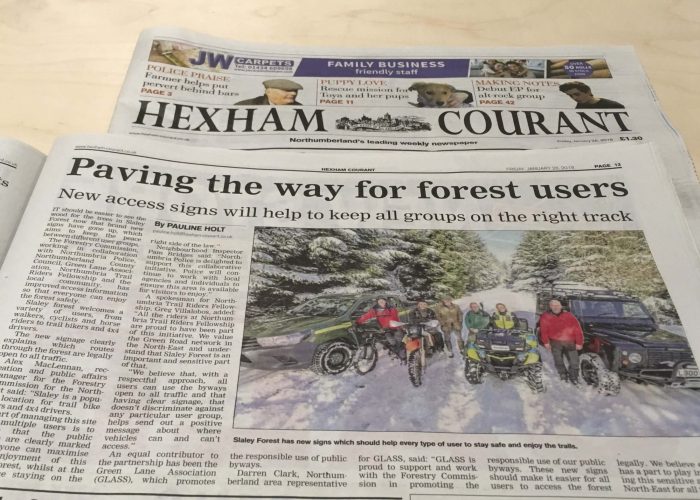
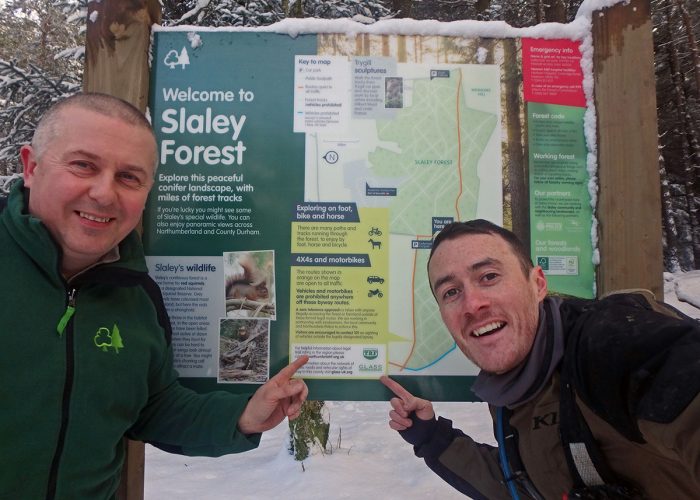
Snow patrol
For the launch of the signage we had a date booked in the diary for a photoshoot with all partners on site. It just so happened to dump a load of snow the night before! There was no way I wasn’t going to make it, plus the perfect excuse for a mid-week ride out.
It wasn’t too cold, I layer up with good gear so to be honest it looks wilder than it felt, but it did take a good picture. The forest is pine and the snow added a Scandinavian vibe to the morning, and after we were done I headed off on a route that links Slaley with Blanchland. This would normally only take about 20 minutes but myself and Mark from GLASS took at least an hour to get through the snowdrifts – hard work but fun.
One of the good things about deep snow is that you get to really push yourself without risking any damage to the surface of the Green Road. At the end of the day it’s only snow that you’re churning up.
Slayley Forrest
There are many tracks in Slaley Forest, many more than are open to all vehicles. Some of these are used for forest operations such as logging, some are footpaths and bridleways and some are BOATs. The Green Roads that we have access to are typically wide and firmly packed and can sustain trail bikes without a problem.
There are also two routes with seasonal TROs on them where they go through softer ground, one through woodland and one over moorland. These are closed to all vehicles in the winter months and open to two- wheeled vehicles in the summer.
Some byways within the forest are subject to seasonal closures.
.


